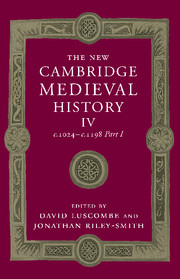
- Cited by 1
-
Cited byCrossref Citations
This Book has been cited by the following publications. This list is generated based on data provided by Crossref.
Heckel, Waldemar 2018. Royal Women and Dynastic Loyalty. p. 19.
- Publisher:
- Cambridge University Press
- Online publication date:
- March 2008
- Print publication year:
- 2004
- Online ISBN:
- 9781139054027
- Subjects:
- Area Studies, European History 1000-1450, British History: General Interest, History, European Studies
- Collection:
- Cambridge Histories - British & European History
- Series:
- The New Cambridge Medieval History (4)


